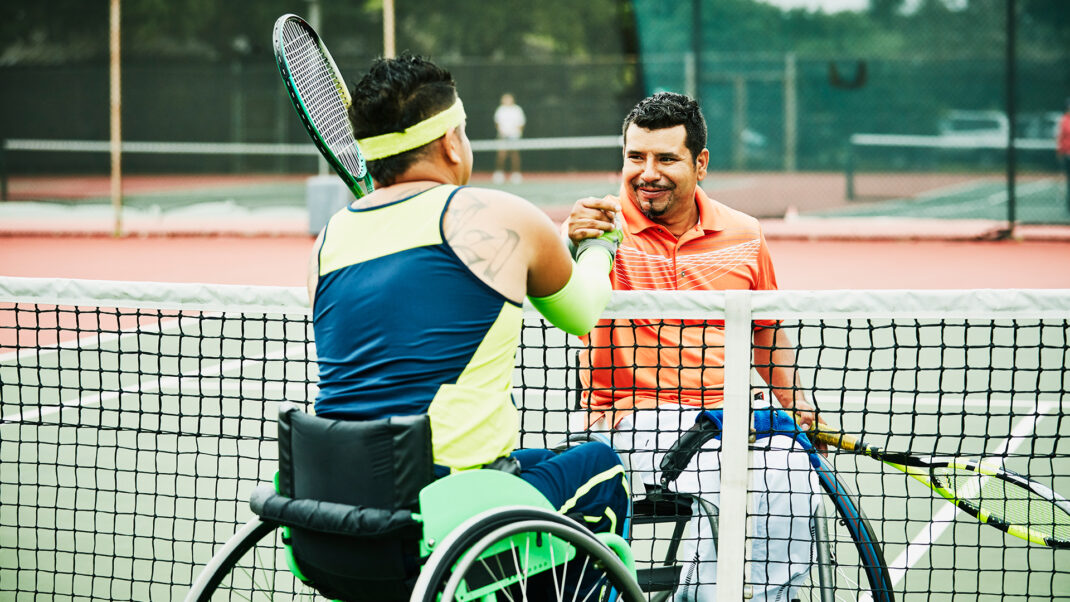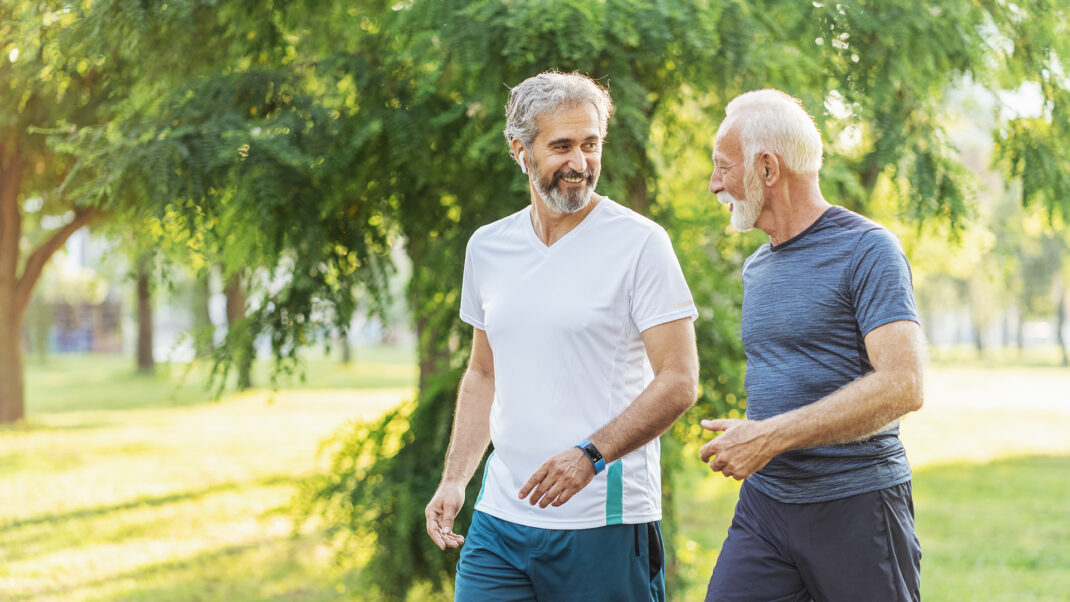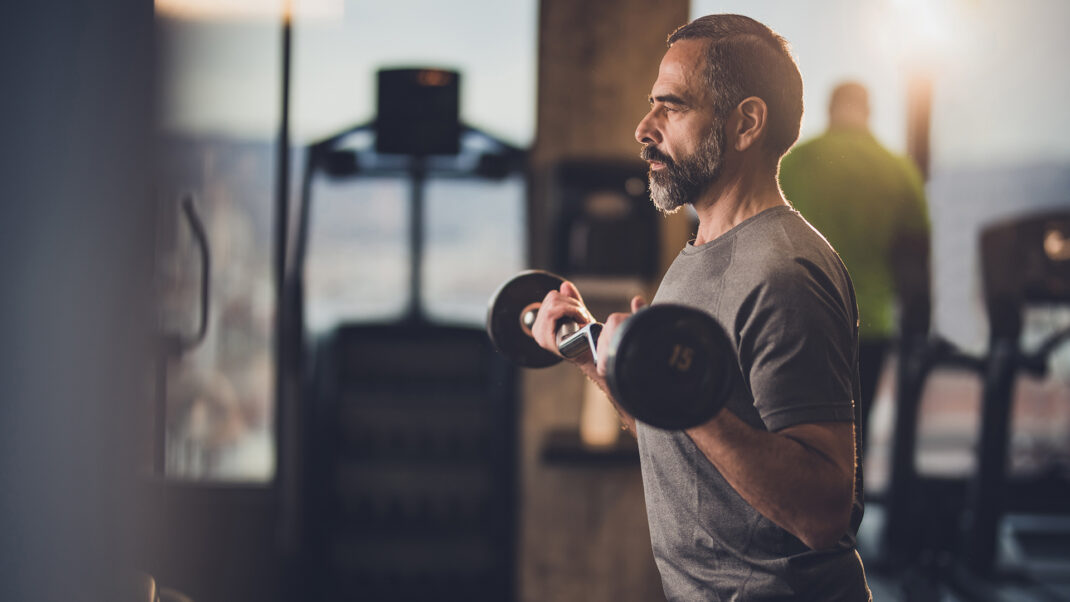Innovative Chair Exercises for Seniors
Offer seated movements that provide functional relevance and challenge.
It’s rewarding to hear older-adult participants say they can more easily perform activities of daily living as a result of taking your classes. Participants at a low level of physical function are especially likely to notice a difference. When working with these individuals in a group setting, you may need to rely on seated activities, to ensure safety and success. This article explores approaches and practical applications from an introductory class called “Build Me Up,” which emphasizes seated strength-building and mobility exercises for participants at a low functional level and at high risk for falls.
Many of the principles and activities in this article are drawn from the books Physical Activity Instruction of Older Adults by C. Jessie Jones and Debra J. Rose (Human Kinetics 2005) and FallProof!™: A Comprehensive Balance and Mobility Training Program by Debra J. Rose (Human Kinetics 2010). As noted in the first of these, program design should draw on general exercise principles of overload and specificity, along with
older adult-specific exercise principles of functional relevance, challenge and accommodation. Follow these guidelines when developing class structure and format. It will help you deliver a program that is valuable, relevant and safe.
Build From the Beginning
Build Me Up classes begin with a 10- to 15-minute seated warm-up that includes continuous, rhythmic movements that proceed from smaller to larger ranges of motion. Progress participants systematically from head and neck movements to shoulder and arm exercises and then to trunk and lower-limb activity. Challenge cognition and motor coordination by repeating movement patterns, such as moving the feet in a repeating “V” pattern of forward-wide and back- ward-narrow. Participants at lower levels of function will not require (or appreciate) a great deal of variety or complexity. Set up class members to achieve success through mastering the routine. This will keep them motivated and may promote more physical activity at home.
Following the warm-up, progress the class through strength-building moves with exercise bands (5- to 6-foot lengths) and 7- to 8-inch, air-filled rubber balls (playground balls). Rotate among upper-body, lower-body and core exercises. A typical seated strength circuit includes the following:
- chest press
- leg extension or leg press (pressing down on ball while it rests beneath foot)
- horizontal pull-apart (scapular retraction; pictured)
- single-leg curl
- arm curl
- hip abduction
- single-arm triceps extension(pictured)
- hip adduction (with ball between knees)
- back extension (with neutral spine)
- single-arm overhead shoulder press (with or without resistance)
- plantar flexion (with resistance)
- ball press (core exercise; pictured)
As participants perform the exercises, cue appropriate posture, breathing and form. Mention the muscles being worked, and discuss the functional relevance of the exercises. For instance, strengthening the triceps muscles will help participants push themselves up from a chair by using their arms. When appropriate, provide alternatives or modifications for limitations or contraindications.
Promote Balance and Mobility
In addition to strength-building exercises, incorporate an activity to promote balance and mobility. You may also stimulate one of the sensory systems that contribute to balance (visual, somatosensory and vestibular). To improve the muscle power required to rise quickly from a chair or recover from a loss of balance, have participants sit with feet hip- width apart, arms extended forward. Ask them to press the feet into the ground as they bring the nose over the knees and lift the buttocks just slightly off the chair (or attempt to lift them off the chair) and then lower themselves back down. Have them perform 5–6 repetitions quickly, rest briefly and then do 1–2 more sets of 5–6 repetitions.
Trunk leans are a great activity for promoting trunk mobility and improving strength, flexibility and center-of-gravity control. Ask class members to extend the ball forward at chest level while they lean the trunk in a forward, forward-diagonal, backward or backward-diagonal direction, as if passing the ball across or leaning away from someone. Cue them to maintain an extended upper-body position (neutral spine) and hinge forward from the hips (not the waist). Eyes are directed forward throughout the activity.
To increase the challenge and promote somatosensory system activation, ask students to close their eyes and feel their feet against the floor. Cue them to sense the changes in pressure and how the angles change at the hips as the trunk moves. Instruct them to open their eyes if they feel dizzy while performing this activity. To increase reliance on the vestibular system, tell participants to keep the eyes focused on the ball while performing trunk and ball movements.
Many people who have significant mobility challenges and weak trunk muscles have a hard time performing trunk leans. You can help participants develop this skill, especially in the forward direction; by doing so, you will improve their ability to rise from seated to standing. Promote lateral trunk rotation by seating participants in a row—sideways to one another, about 2 feet apart—and have them rotate the trunk (moving from the hips, not just with the arms) to pass a ball along the line. Vary the height (shoulder, waist and knee level) at which they pass the ball.
Work on Center-of-Gravity Control and Coordination
To improve seated center-of-gravity control, to enhance motor coordination and to force greater reliance on one or more of the sensory systems used for balance, include seated balloon volleyball and beanbag-tossing activities. For seated balloon volleyball, arrange clients in chairs in a circle (you may want to have extra chairs next to your more unstable clients) and instruct participants to tap a balloon to one another. Introduce a cognitive element—and turn the game into a dual-task activity—by asking participants to count out loud as they tap the balloon, to see how many times they can keep it aloft.
Another idea is to give everyone a beanbag, with the instruction to toss it from one hand to the other or to toss and catch it with two hands (easier to control). To engage the vestibular system, ask participants to watch the beanbag as it moves. Further increase the challenge by asking people to count out loud in serial sequences (e.g., count backwards from 100 by 3s) or call out words in a category (e.g., flowers, names of candies) each time they toss the beanbag.
End the class with a 5- to 10-minute seated cool-down that includes chest stretches with the arms retracted and single-leg hamstring stretches. These stretches address two areas where improved flexibility can have a significant impact on posture and functional movement. Conclude with several deep breaths with corresponding overhead arm lifts to improve respiratory control and bring closure to the class.
Be innovative with exercises that provide functional relevance and that challenge your older participants within their capabilities. Continue to provide your valuable service to this population, knowing you are
helping older adults increase functional fitness and maintain independence.
Sidebar: Learn More About Working With Older Adults
If you’d like to improve your teaching skills and get a better understanding of how to address the needs of older adults, review the following products from the IDEA Store (www.ideafit.com/fitness-products):
- Training Issues and Solutions for Older Adults, by Lauren Eirk (streaming video)
- Older Adults: a Multitude of Modifications, by Gay Elliott (streaming video)
- Postural Re-Education for Older Adults, by Shari Kalkstein (streaming video)
- Exercise Program Design for Falls Prevention, by Rodney Corn, MA and Christian Thompson, PhD (CEC course)
- The Aging Club Member Crisis, by Sue Hitzmann, MS (CEC course)
References
Jones, C. J., & Rose, D. J. 2005. Physical Activity Instruction of Older Adults (2nd ed.). Champaign, IL: Human Kinetics.
Rose, D.J. 2010. FallProof!Ôäó: A Comprehensive Balance and Mobility Training Program. Champaign, IL: Human Kinetics.
Karen Schlieter, MBA, MS
I am a fitness and wellness professional, specializing in balance and mobility for older adults. I graduated from California State University, Fullerton (CSUF) with a bachelorÔÇÖs degree in psychology and a masterÔÇÖs degree in gerokinesiology, and an M.B.A. from the University of Redlands. I am a Certified Master Instructor and Assistant Program Director of the renowned FallProof Balance and Mobility Specialist Instructor Certification program. Prior to relocating to St. George, Utah, I served as the Programs and Events Coordinator and a balance and mobility instructor for the Center for Successful Aging and as a part-time faculty member in the Department of Kinesiology at California State University, Fullerton. As an instructor of balance, mobility, fitness and wellness, an ACE Certified Personal Fitness Trainer, and an ACE Certified Health Coach, I enjoy helping mid-life and older adults achieve and maintain fitness, wellness, balance and mobility. I currently teach physical activity and balance and mobil







